Repair Water Damaged Wood
If you have an old piece of furniture that has been affected by water damage, don’t give up hope just yet! With the right techniques and tools, you can repair water damaged wood and restore your piece. Repairing old furniture not only helps preserve its history and beauty, but it also saves you money compared to buying a new piece.
We will guide you through the steps of fixing wood furniture damaged by water, including checking for chipping or missing wood pieces and using Bondo wood filler for a seamless finish.

Wood furniture is a beautiful and timeless addition to any home, but it can be susceptible to damage from water.
Whether it’s from a leaky roof or an accidental spill, water can cause wood to warp, swell, and even rot if left untreated.
If your wood furniture has been affected by water damage, it’s important to act fast and fix it right to prevent more damage.
One common issue with water damaged wood furniture is chipping or bubbling of the veneer. Veneer is a thin layer of real wood that is applied to a piece of furniture for decorative purposes.
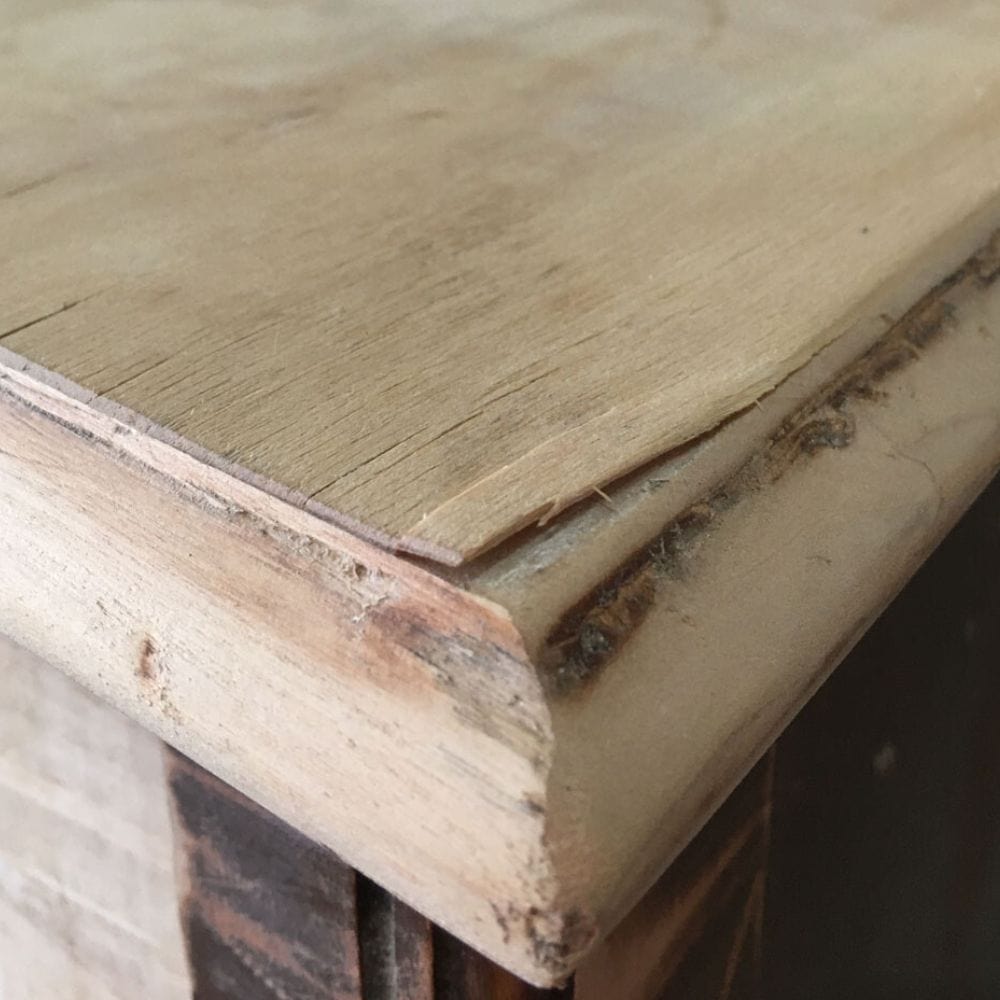
When it gets wet, the adhesive holding the veneer can weaken, causing those annoying chips and bubbles.
This not only affects the appearance of your furniture, but it can also cause more damage if you don’t do something about it.
Another issue with water damaged wood furniture is missing pieces of wood. When wood is exposed to water for a long time, it can start to rot and decay. This can result in missing chunks of wood in your furniture, making it unstable and unsightly.
The good news is, we can fix these issues!
Check for Wood Chipping Off
First, you’ll want to assess for any chipped or bubbling veneer on your furniture. If it’s just a small section, you may be able to fix it without removing the whole piece.
If the furniture has chipped paint you can check out how to repair chipped paint on wood for a detailed guide on doing this process!
However, if there are multiple areas affected, it may be best to remove all the veneer and start fresh.
As an Amazon Associate, I earn from qualifying purchases. I also may earn from other qualifying purchases with other companies or get free product to review and use. All opinions are my own.
How to Fix Veneer
First, cut into the bubbled veneer with a utility knife and remove the damaged section. Then mix up some Bondo wood filler and use a spreader or putty knife to fill in the hole. Overfill it slightly to account for sanding down later on.
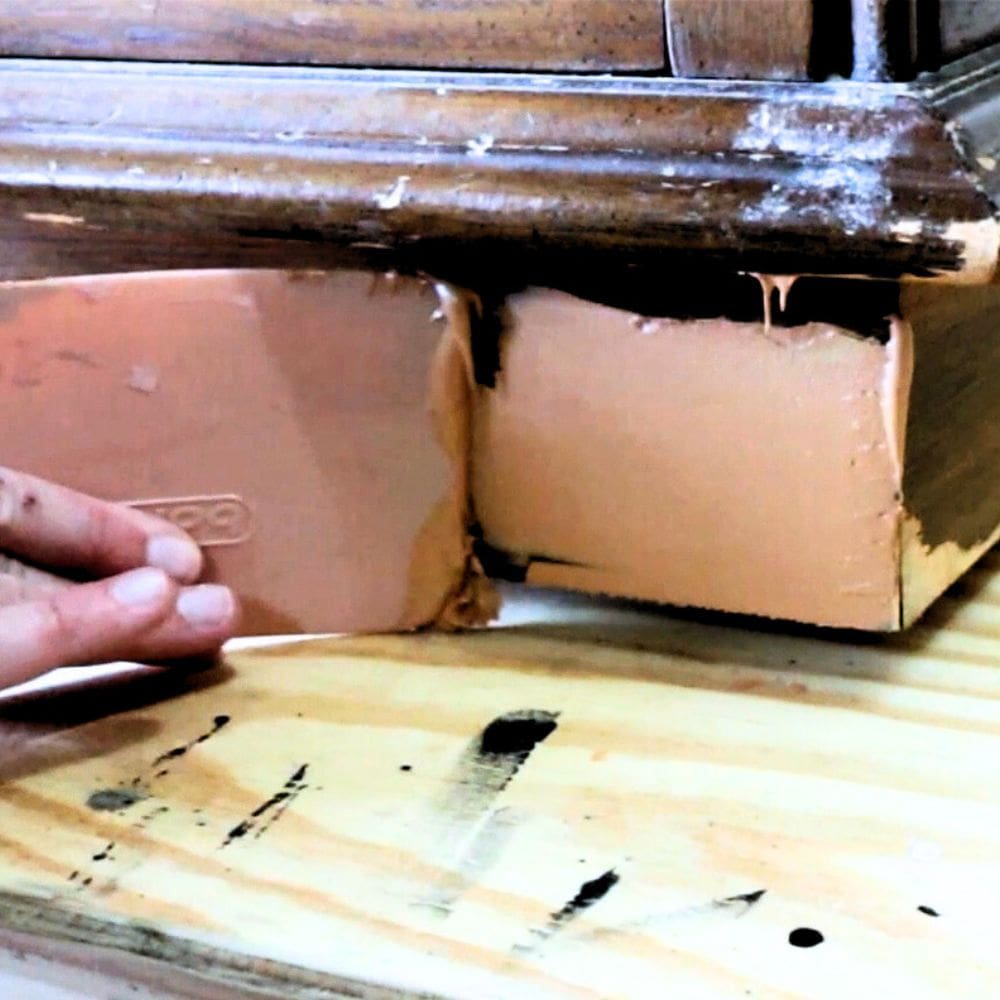
But if you would like to try other wood fillers other than Bondo, here’s our list of the best wood fillers for furniture.
Wait for the Bondo to dry, then use a power sander to sand it flush with the surrounding veneer.
Next, do another round of filling in and sanding down the Bondo for a smooth and seamless finish. Don’t forget to make grain marks with a utility knife for a more natural wood look, especially if you’re working with oak.
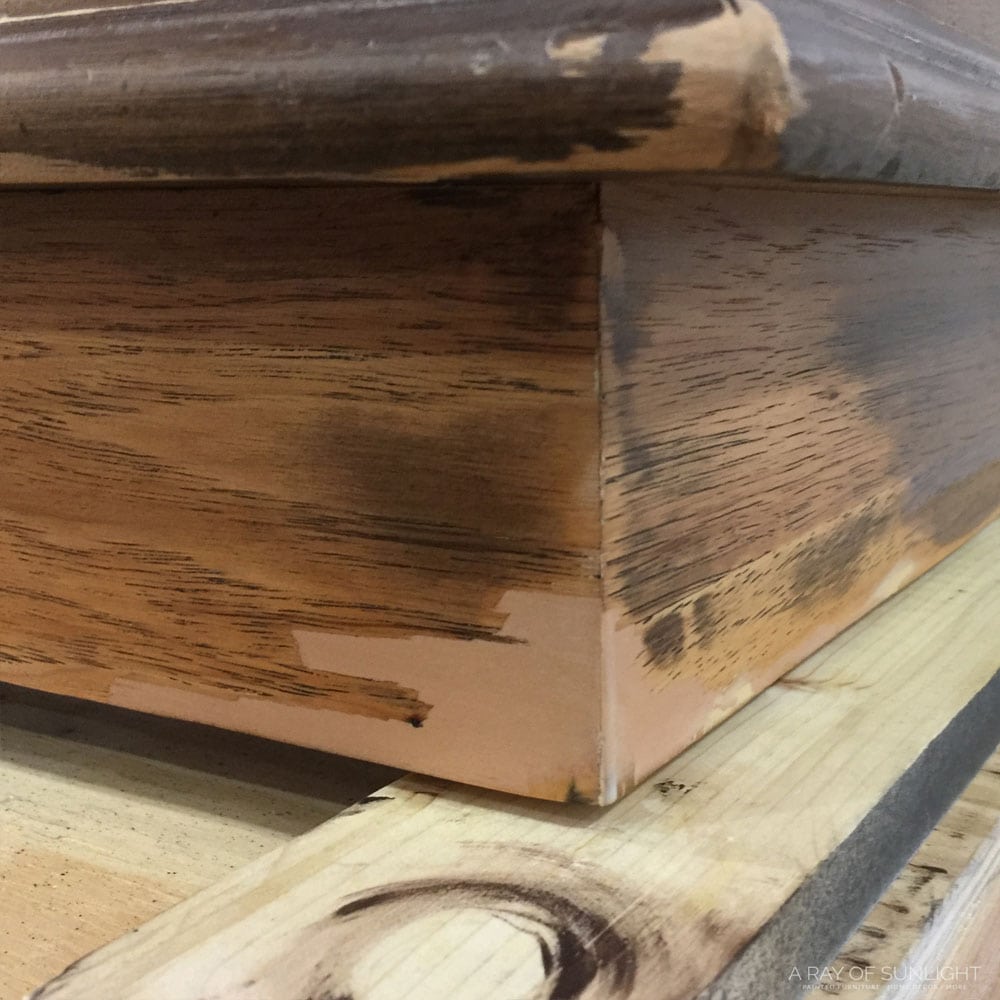
Finally, seal the Bondo and veneer with clear shellac or primer for the best paint finish.
Our tutorial on how to repair bubbled veneer goes into more detail with step-by-step pictures to guide you through the process.
How to Remove Veneer
Removing veneer can be a tedious process, but it’s necessary when the damage is beyond repair. One way to remove veneer is through the “towel and iron” method.
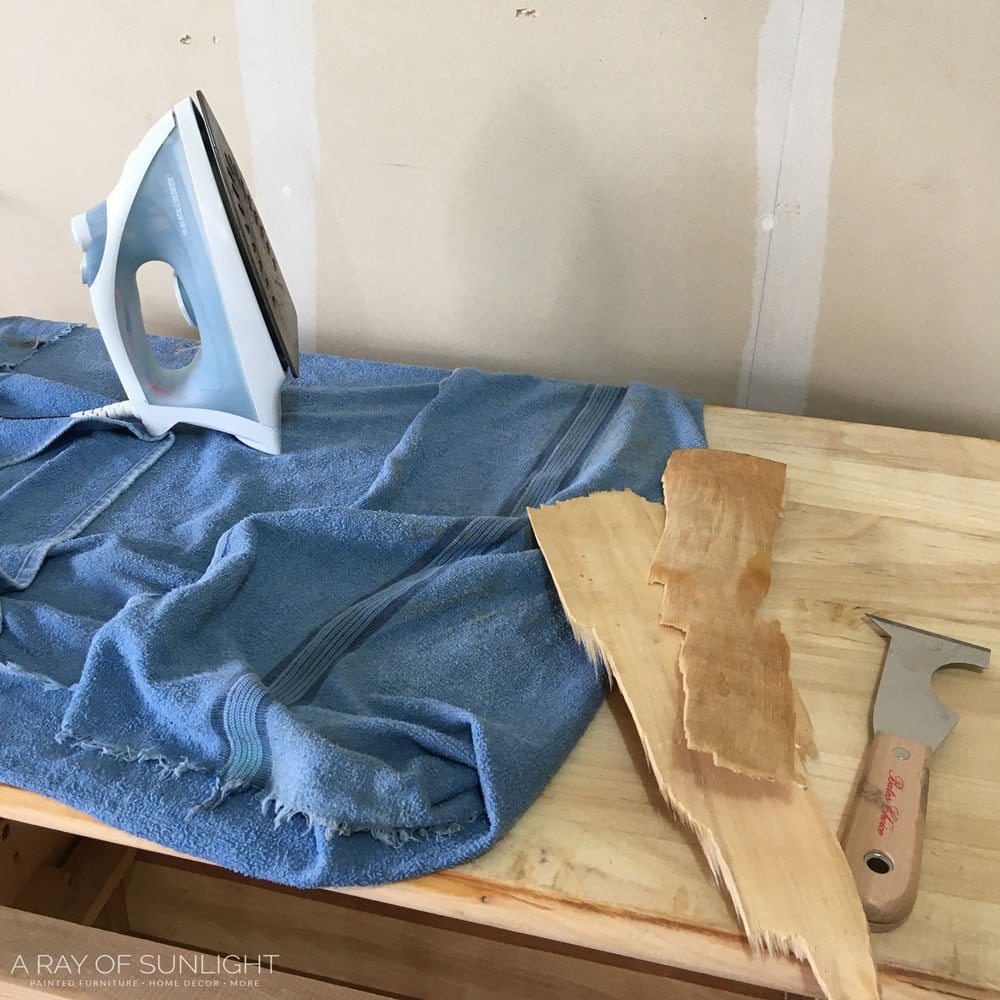
By moistening the veneer with a warm towel and applying heat from an iron, you can soften the glue holding the veneer in place and gently scrape it off.
This method is gentle and can be repeated until all the veneer is removed.
Another method for removing veneer involves using a heat gun or hair dryer to soften the glue. Again, you will need to gently scrape off the loosened veneer with a metal scraper. Using tools like a hammer or power sander can also help remove stubborn pieces of veneer.
It’s important to be careful and patient during this process to avoid damaging the wood underneath.
Once you have successfully removed the veneer, it’s important to sand down the exposed wood with medium grit sandpaper.
This will help smooth out any rough patches and prepare the surface for a new finish. Check out our post on removing veneer for more detailed instructions and tips.
Check for Missing Wood Pieces
If your wood furniture has missing pieces of wood, you can still repair it with the help of Bondo wood filler.
Bondo is a two-part putty that dries quickly and hard, making it perfect for fixing wood furniture. You can find it at most hardware stores or online.
How to Use Bondo Wood Filler
To use Bondo Wood Filler, first make sure the surface to be repaired is clean and free from dust. Then mix the base and hardener together quickly and thoroughly until you get a consistent color. Work efficiently as Bondo dries very fast.

Once the filler is mixed, apply it to the damaged area evenly with a spreader or putty knife. Overfill slightly to allow for sanding down later on.
After about 30 minutes, the filler should be hard and ready for sanding. Use medium to fine-grit sandpaper to smooth out the surface and make it flush with the surrounding wood.
Our Bondo wood filler review can give you more in-depth information and show our experience in using this product for wood repair.
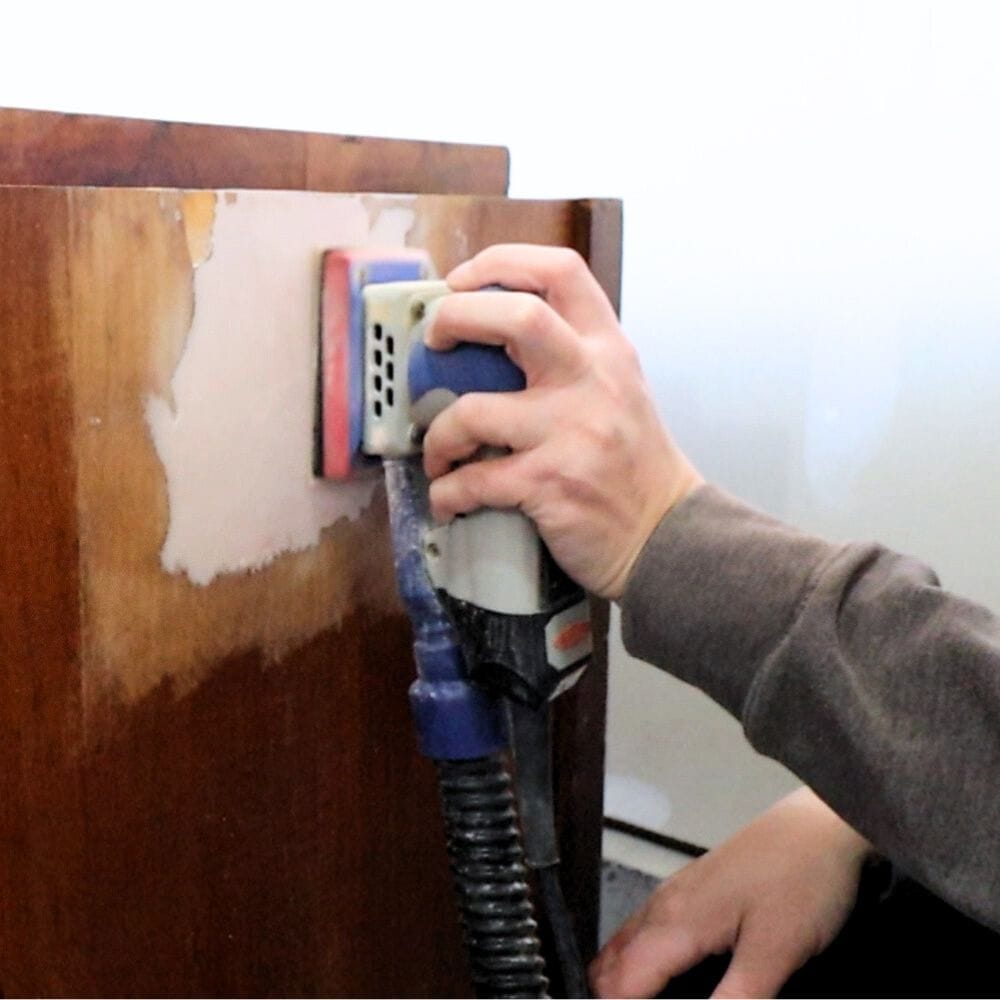
After sanding, clean the area and you’re ready for either staining or painting. Remember to prime with a shellac-based primer before painting for best results.
Here’s our wood stain repair tutorial if you prefer staining instead of painting.
Repairing water damaged wood may be something you think is best left to professionals, but with the right tools and techniques, you can definitely do it yourself!
Just remember to act quickly when dealing with water damage to prevent further issues and follow our tips for fixing chipped veneer and missing wood pieces.
More Furniture Repair Tips
- How To Fix Veneer That Is Lifting
- How to Fix a Chipped Wood Corner
- Wood Veneer Problems
- How To Repair Damaged Wood Finish
- Wood Surface Repair
Follow us on YouTube to get more tips for painting furniture.
Or share your project with us on our Facebook Group and be part of our community. See you there!
